- Elsa Mischmann
- BBC news
—
3 hours ago
photo released, Reuters
—
The so-called “hunger stones” in the Rhine
–
Europe suffers weeks of drought, with continuous heat waves leading to deaths and evacuations.
–
Rivers and lakes have dried up, causing severe problems for navigation and other vessels. The falling water level also revealed some treasures that were buried underwater.
–
Among these treasures are the so-called “hunger stones”, which are stones carved on the waterline of rivers during past droughts as a warning to future generations that if these stones appear above the water, difficulties await us.
–
Most of these stones appeared on the banks of the Elbe River, which flows from the Czech Republic to Germany.
–
One of those stones, which was first carved in the 15th century, emerged in 1616, when the locals carved the words “If you see me, cry” on it.
–
The low water levels in the Serbian Danube revealed the sunken wrecks of WWII ships, still laden with explosives.
–
The ships found near the town of Prahovo were part of a Nazi fleet that sank in 1944. More are expected as the current drought continues.
–
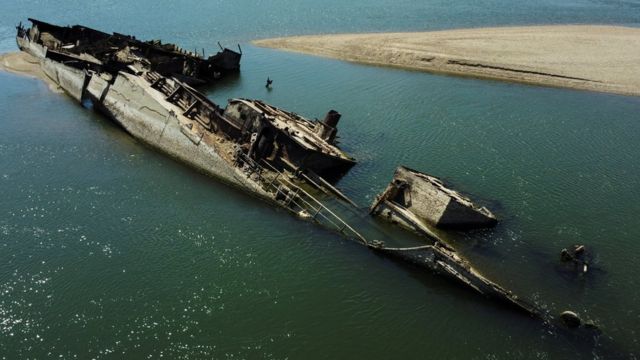
photo released, Reuters
—
Several German ships sank in Prahovo as the Nazis fled before the Soviet forces
–
Unexploded ordnance has also been found in the Po River in Italy.
–
About 3,000 people were evacuated from a village near Mantua last July, while sappers removed and detonated a previously submerged WWII bomb.
–

photo released, Reuters
—
The unexploded bomb was extracted from the river Po by the Italian army.
–
A warship also appeared which was used by the Germans and was sunk in 1943 in the Po River.
–
Locals had started seeing the “Zabello” barge when the water level dropped several months ago, only to reveal more of it as the drought continued.
–
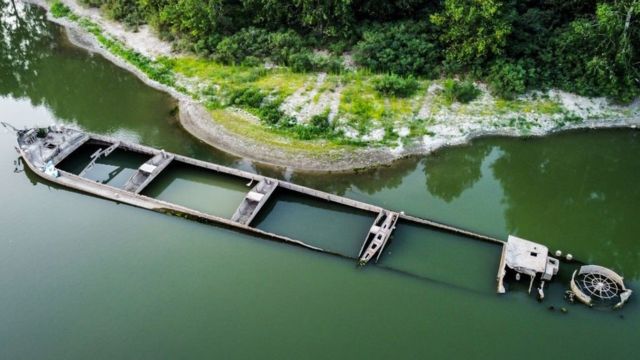
photo released, Getty Images
—
The “Zebello” warship is gradually unveiled.
–
The low water level of the Tiber river in the Italian capital, Rome, revealed the traces of an ancient bridge, probably built by the emperor Nero around the year 50 AD.
–
It was always possible to see a small part of these effects when the water level went down, but now it is possible to see a larger part of the structure of the ancient building.
–
The ruins of the old bridge lie beneath the site of a modern bridge, the Vittorio Emanuele II bridge.
–
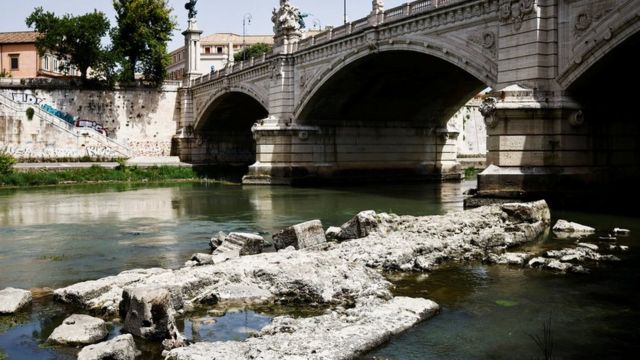
photo released, Getty Images
—
In the Tiber appeared the remains of the bridge built by Nero.
–
In Spain, traces of very old stone burials, or what we can call “Spanish Stonehenge”, have appeared in the “Valdethanas” reservoir in the “Caceres” province in the center of the country.
–
These stone circles, officially called the “Guadalberal burials”, are believed to date back to 5000 BC.
–
It was discovered by an archaeologist in 1926, but the area was submerged by a rural development project in 1963.
–
Since then, she has only appeared four times.
–
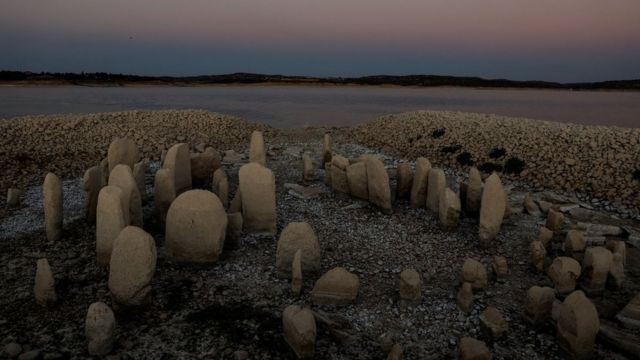
photo released, Reuters
—
Stone monuments (Spanish stoheng) were drowned by officials in the Franco era, but these stone traces reappeared.
–
In Galicia, on the border between Spain and Portugal, a “ghost village” appeared earlier this year after drought left a depleted reservoir.
–
The town, called “Atherido”, was flooded in 1992 to make way for the construction of the dam basin.
–
Some of the former villagers have returned to look at the destroyed buildings.
–
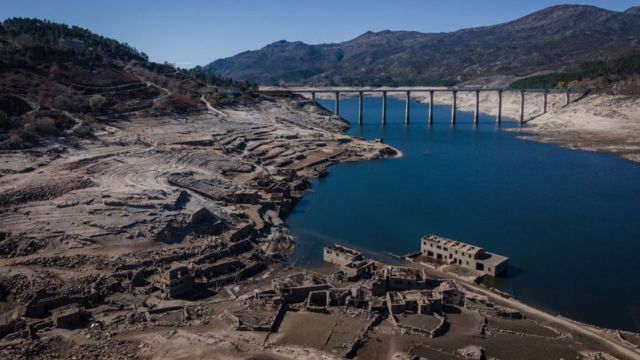
photo released, Getty Images
—
The village of Etrido in Galicia, Spain is usually underwater.
–
The drought has revealed lost treasures in the UK as well.
–
Remains believed to belong to a church have been unearthed in the village of Derwent in Derbyshire.
–
The village was flooded in the 1940s to make way for the construction of the Lady Power Dam lake.
–
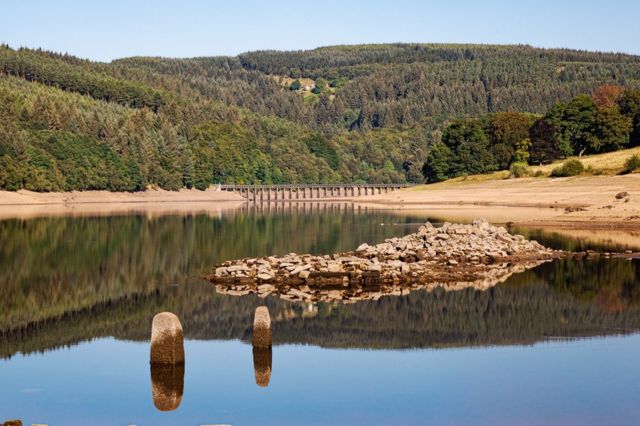
photo released, Terry Westermann
—
Derwent church towers were originally left intact as a memorial but were later removed.
–
There are also traces of ancient trees in the Culliford Lake reservoir in Cornwall.
–
The Bodmin Moor area was flooded in the 1980s.
–

photo released, Getty Images
—
These trees have been underwater since the Bodmin Moor reservoir overflowed.
–
And the effects of some seventeenth-century gardens appeared in Lydiard Park in Swindon, South West England, after the heat led to the drying of the herbs to reveal underground traces of the presence of those gardens.
–
Similar “ghost gardens” have also appeared in Longleat, a stately home adjacent to the park.
–
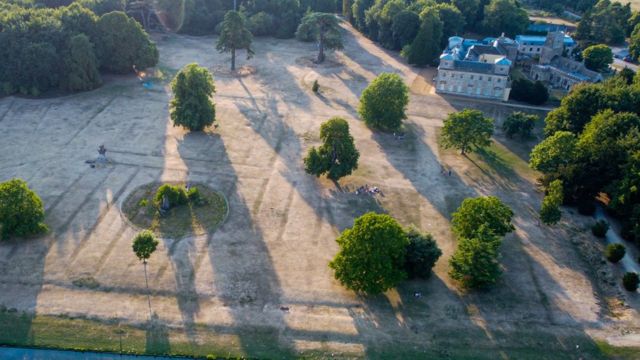
photo released, Phil Jefferies
—
Tracks in the ground showing former gardens at Lydiard Park.
—


